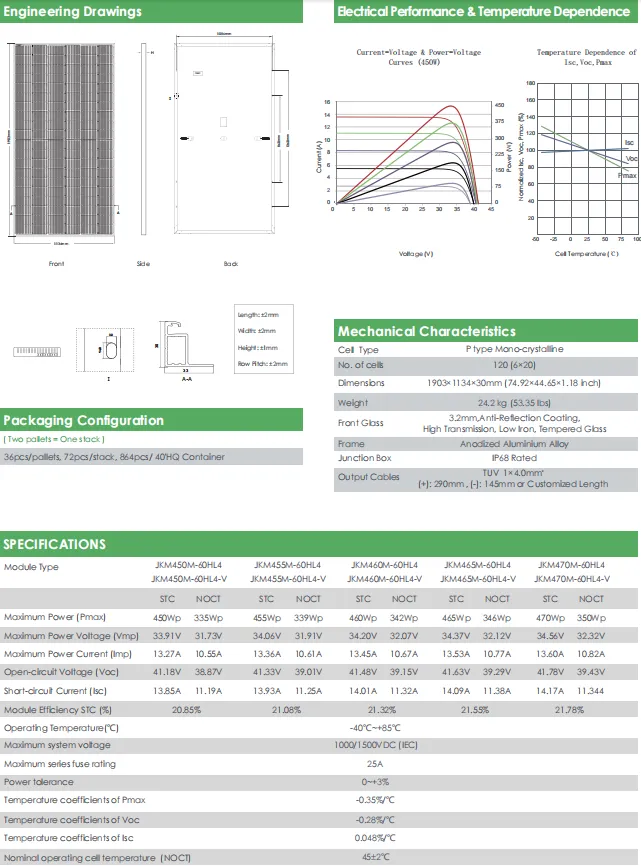efficiency of polycrystalline solar panels
The Efficiency of Polycrystalline Solar Panels An Overview
Solar energy has emerged as one of the most promising renewable energy sources in the fight against climate change and the quest for sustainable energy solutions. Among the various materials used in solar panels, polycrystalline silicon has gained popularity due to its balanced cost and efficiency. This article explores the efficiency of polycrystalline solar panels, their advantages and disadvantages, and the factors affecting their performance.
Understanding Polycrystalline Solar Panels
Polycrystalline solar panels are made from multiple silicon crystals melted together. They are characterized by their blue hue and a somewhat mottled appearance. In contrast to monocrystalline panels, which are made from single silicon crystals and typically offer higher efficiency, polycrystalline panels are usually less expensive to produce. This makes them a popular choice for residential and commercial installations, especially in regions where installation costs are a significant concern.
Efficiency Ratings
The efficiency of a solar panel is defined as the percentage of sunlight that is converted into usable electricity. Polycrystalline solar panels generally have efficiencies ranging from 15% to 22%. While this may be lower than the efficiency rates of monocrystalline panels, which can exceed 22%, polycrystalline panels still offer a significant return on investment for many applications. The efficiency of these panels can vary based on several factors, including the manufacturing process, material quality, and environmental conditions.
Advantages of Polycrystalline Solar Panels
1. Cost-Effectiveness One of the primary benefits of polycrystalline solar panels is their lower production costs. They are typically cheaper than monocrystalline panels, making them an attractive option for budget-conscious consumers.
2. Environmental Impact The manufacturing process of polycrystalline panels is less energy-intensive than that of their monocrystalline counterparts. This can lead to a smaller carbon footprint during production.
3. Good Performance in Warm Conditions Polycrystalline panels often perform better than monocrystalline panels in high-temperature environments. They are generally less susceptible to performance degradation at elevated temperatures.
4. Longevity and Warranty Most polycrystalline solar panels come with solid warranties, often ranging from 25 years. This is indicative of their reliability and durability over time.
Disadvantages of Polycrystalline Solar Panels
efficiency of polycrystalline solar panels

1. Lower Efficiency Although polycrystalline panels are more affordable, their efficiency is generally lower compared to monocrystalline panels. This means that more space may be required to achieve the same output, which can be a drawback for installations with limited roof space.
2. Performance in Low-Light Conditions Polycrystalline panels can be less efficient in low-light conditions compared to their monocrystalline counterparts. This may affect energy generation during overcast days or in shaded areas.
3. Temperature Coefficient Polycrystalline panels typically have a higher temperature coefficient than monocrystalline panels. This means that their efficiency can decline more significantly as temperatures rise.
Factors Affecting Efficiency
The efficiency of polycrystalline solar panels can be influenced by several factors
- Installation The angle and orientation of the solar panels can significantly impact their performance. Proper installation ensures maximum exposure to sunlight.
- Shade Shadows cast by trees, buildings, or other objects can reduce the efficiency of solar panels. Ensuring clear access to sunlight is essential.
- Temperature As mentioned, temperature plays a crucial role. Cooler environments typically yield better performance for solar panels.
- Maintenance Regular cleaning and maintenance can prevent dust and debris from accumulating on the panels, which can obstruct sunlight and reduce efficiency.
Conclusion
Polycrystalline solar panels present a viable option for consumers and businesses looking to harness solar energy. While their efficiency may not match that of monocrystalline panels, their cost-effectiveness and environmental benefits make them a popular choice in many applications. With the ongoing advancements in solar technology and manufacturing processes, the efficiency of polycrystalline panels is likely to improve, helping to enhance their appeal in the renewable energy market. In the era of sustainability, polycrystalline solar panels remain a valuable asset in the transition toward a greener future.
-
String Solar Inverter: The High-Efficiency Solution for Smart Solar EnergyNewsJul.14,2025
-
Revolutionizing Rooftop Energy with the Power of the Micro Solar InverterNewsJul.14,2025
-
Power Independence with Smart Off Grid Solar Inverter SolutionsNewsJul.14,2025
-
On Grid Solar Inverter: Powering the Future with Smart Grid IntegrationNewsJul.14,2025
-
Monocrystalline Solar Panels: High-Efficiency Power for the Future of Clean EnergyNewsJul.14,2025
-
Bifacial Solar Panel: A Smarter Investment for Next-Generation Energy SystemsNewsJul.14,2025







